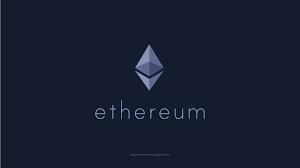The public chain track is heating up again, and the Move-based new public chain is emerging
Author: IOBC Capital
Since the birth of blockchain, the entire industry has gone through several cycles of replacement. Currently, Ethereum, which has the richest ecosystem and the greatest influence, has been criticized for performance and cost issues, and is constantly challenged by emerging competitors during the cycle.
In the last cycle, a number of new Layer 1 projects emerged, such as Solana, Polygon, Fantom, and Near, all of which attempted to make some improvements and explorations on the underlying public chain.
As the cycle enters a new bear market, a wave of new public chains is emerging. Among them, the most noteworthy are undoubtedly the Libra-related projects that use the Move programming language: Aptos and Sui.
In 2019, Facebook (now renamed Meta) announced the launch of the globally circulating cryptocurrency Libra (later renamed Diem) with great fanfare. However, due to regulatory issues, the Libra project failed to materialize. This also made the team realize that to truly establish an innovative Web3 project, they must completely break away from traditional fields and enter the crypto space.
The developers of Aptos and Sui were core developers of Libra, inheriting the programming language from the Libra project—the Move language—to build these two new public chains.
This article will briefly introduce some features of the Move language and the current status of these two public chains.
Move Language
The Move language is considered the most suitable language for writing smart contracts. Many people compare it to the currently mainstream Solidity language and believe it is superior to Solidity. This is mainly because Move was optimized for blockchain assets from the very beginning.
Asset Security
Almost every blockchain project has its own crypto assets. The value growth of assets is both a result of project development and a driving force for project development. Asset security should be a top priority for project development. However, frequent incidents of asset theft and loss in the crypto industry have made many potential investors wary of entering the field. According to SlowMist's data, there were about 100 DeFi security incidents in the first half of 2022, resulting in losses exceeding $1.63 billion, with project defects and contract vulnerabilities being the top reasons.
Move is a language born for operating digital assets. The Facebook team initially developed the Move language to serve Diem, aiming to create a global financial and monetary infrastructure. Therefore, Move must have the capability to encode various assets and business logic that constitute financial infrastructure.
In the Move language, there is a greater emphasis on assets and resources. In their words, "First-class resources." Solidity and most programming languages treat tokens or crypto assets as numerical values, and the process of asset transfer is achieved through numerical addition and subtraction on accounts. For example, if Alice wants to transfer 10 tokens to Bob, she first subtracts 10 from her balance and then adds 10 to Bob's balance. This process of adding and subtracting across multiple asset accounts can easily lead to security vulnerabilities, relying on the rigor of the code to ensure asset safety.
However, in the Move language, assets are redefined as a resource type, no longer treated as strings or numerical variables. The Move programming language abstracts four attributes of resources: copy, key, drop, and store. Through different combinations of these four attributes, users can easily define any type of resource.
The resource-first concept greatly helps programmers write safe and efficient code. As Damir, a programming engineer from the SUI development team, said: "Once you start thinking like an object rather than building abstract thoughts on programming primitives like hash maps, you can always know what you are doing, just like having infinite expressiveness and clearly defined types—what was in the past and what is in the present." This design makes operations on resources more concrete and clearer.
Move also defines some characteristics of resources:
Binding with accounts. Resource data must be bound to an account, so corresponding resource assets only exist after an account is allocated. Additionally, once a resource is extracted, it must have a destination, either being passed as a return value to flow to an account or being directly destroyed. It can be understood that the movement of Move's tokens is a transfer from one account to another, while Solidity operates on addition and subtraction, first subtracting in one place and then adding in another.
Next is asset access permissions. In Solidity, data is stored in contracts, and when a contract has vulnerabilities, if a hacker gains access to the contract, all user data will be at risk.
In Move, data is stored in the account that owns it, not in the contract. Move has many modules, which are programs that can create, transfer, and store assets, similar to smart contracts in Ethereum. Move stipulates that only public module functions can be accessed by other modules.
Each resource (object) is stored in a module controlled by the owner's account. To access or modify a module, the signature of the module owner is required. The signer in Move has the highest level of authority and is the only entity that can add resources to an account. This feature allows for the maintenance of digital asset ownership information and privileges within smart contracts. If assets are sent to a smart contract, ownership does not change. In this case, even if the smart contract is compromised by an attacker, the assets will not be lost.
Architectural Security
Move has learned from the experiences and lessons of security incidents in Solidity, adding many features on top of Solidity, resulting in significant innovations in the underlying security design, making the system more secure and reliable.
The Move language has several characteristics:
Static calls. So what is a static call? A static call is the opposite of a dynamic call. When a program calls another program, if the target being called can only be determined at runtime, it is called a dynamic call; conversely, if the program can determine the target before running and cannot change that target during execution, it is called a static call.
Calls in Solidity are implemented through dynamic calls, which can lead to circular calls due to the inability to determine the calling object, posing significant security risks. For example, the DAO attack and the PolyNetwork cross-chain attack are similar incidents.
The Move language learns from these lessons and opts for a static call design, reducing the likelihood of runtime program crashes.
Formal verification. Formal verification is the use of mathematical methods to prove the security of a program. The Move team has developed the Move Prover tool for users, which can use mathematical methods to test and prove the reliability of contracts. Developers can run tests in minutes, allowing them to identify errors in the code before deployment.
In short, Move is a language specifically created for blockchain assets and smart contracts, significantly outperforming Solidity in terms of security and verifiability.

Image source: BuilderDao
The public chains developed based on Move, such as the most representative Aptos and Sui, also bring greater imaginative space.
New Public Chains in the Move Ecosystem
Aptos is currently the leading project among the new Move-based public chains in terms of development progress, ecosystem richness, and financing progress.
In March of this year, Aptos completed a $200 million financing round, led by a16z. Other participants included top institutions such as Tiger Global, Multicoin Capital, FTX Ventures, Coinbase Ventures, and Binance Labs. On July 25 of this year, Aptos completed another $150 million financing round, led by FTX Ventures and Jump Crypto, with participation from a16z, Multicoin Capital, and Circle Ventures. In less than half a year, Aptos raised a total of $350 million.
Aptos was established in early February this year but inherited the development achievements of the Libra team over the past few years, aiming to pursue blockchain security, high performance, scalability, and upgradability. Its core developers are all from the original Libra project.
Current Status
On March 15 of this year, Aptos launched the developer testnet, and in May, it initiated the Incentivized Testnet (AIT1), providing a test platform similar to the mainnet for developers and partners, and offering incentives to all participants who help ensure network security.
According to Aptos's roadmap, the incentivized testnet has four rounds:
- AIT1: Decentralized launch
- AIT2: Staking
- AIT3: Governance and upgrades
- AIT4: Dynamic validator topology
Aptos Incentivized Testnet 2 (AIT2) started on July 1 and ended on July 22, focusing on staking. Over 225 community nodes participated in AIT2, distributed across 44 countries and 110 cities worldwide. Each successful participant received 500 Aptos tokens. Additionally, the top 10% of voting nodes received an extra 200 Aptos tokens.
Aptos Incentivized Testnet 3 (AIT3) ran from August 30 to September 9, focusing on governance and upgrades.
Aptos stated in a blog post that its test network has reached over 20,000 nodes, and this test network can verify and synchronize over 10,000 transactions per second (TPS) with sub-second latency, moving towards over 100,000 TPS.

According to the roadmap, Aptos plans to launch its mainnet by September of this year.
Security
In addition to using the more secure Move language as its development language, Aptos employs an optimized Byzantine consensus called "Proof-Of-Stake Diem BFT," which has undergone four iterations in consensus over the past three years to achieve high transaction throughput, low latency, and greater energy efficiency.
Aptos's BFT protocol keeps the network running smoothly while maintaining world-class speed. Aptos uses a reputation system to update validator rotations and employs a "pacer" to synchronize votes. This system fully verifies transactions in less than a second (often referred to as the "finality time" metric), making it one of the fastest blockchains in production.
To ensure security, Aptos has also enabled a large number of validators for testing. To prevent key loss or theft, Aptos has implemented account key recovery and rotation protocols, allowing any account to rotate its private keys, and validators can regularly rotate their consensus keys. To prevent key loss, Aptos is also developing new key recovery technologies that can be directly integrated into the blockchain account model.
Scalability
Aptos advocates that Layer 1 blockchains should take on more "scalability" responsibilities to enhance mainstream adoption. In planning to improve throughput and finality speed, Aptos plans to completely separate the consensus protocol from transaction execution to accelerate transaction broadcasting.
Aptos has also optimized the data structures for authentication and related state storage to enhance performance. When verifying ledger states (such as account balances, smart contracts, etc.), small-scale Merkle trees in memory are effective, but large Merkle trees cannot be written to persistent storage. To address this issue, Aptos is designing authenticated data structures by exploring cache and version control optimized for access patterns, and Aptos is also developing support for large accounts.
Upgradability
The rapid development of blockchain necessitates continuous upgrades to adapt to new demands after protocol release. Upgradability is another key focus of Aptos, aimed at solving the problem of making significant protocol improvements difficult after launch. Therefore, Aptos manages and configures the validation of the chain directly through on-chain states, allowing for quick execution of upgrades after community voting. This design has withstood the test in several major upgrades without any downtime.
Ecosystem
Aptos has held a hackathon. At the end of June this year, Aptos launched a $200 million ecosystem funding program, with funding categories including six types: developer tools, SDKs, libraries, documentation, guides, and tutorials; tools and frameworks for development, governance, DeFi, and NFTs; core protocol contributions: token standards, libraries, protocol upgrades, etc.; open-source and public goods; educational initiatives; and applications.
According to Aptos itself, there are over 100 projects building on the Aptos network, with only a few applications in its ecosystem having detailed introductions and development roadmaps, namely Pontem Network, Econia, Fewcha Wallet, and Martian Wallet, focusing on wallet and DEX applications.

Sui
In December 2021, Sui, the earliest project in the Move public chain ecosystem, announced a $36 million Series A financing round, with investors including a16z, NFX, Scribble Ventures, Redpoint, Lightspeed, Electric Capital, Samsung NEXT, Slow Ventures, Standard Crypto, and Coinbase Ventures. On July 12 of this year, Sui was reported to be seeking $200 million in Series B financing, with a valuation already reaching $2 billion.
The development team of Sui is Mysten Labs, which designed its own high-performance Layer 1 proof-of-stake (PoS) blockchain, Sui, released in March of this year.
Like Aptos, Sui also uses the Move programming language from Diem, but Sui's object model differs slightly from Aptos. Currently, Sui has released its economic white paper, but development progress has been slow.
In the use of the Move language, Sui has made upgrades and adjustments, allowing the language to write smart contracts for both fungible tokens (FTs) and non-fungible tokens (NFTs).
In terms of scalability concerning network performance, Sui focuses on transaction parallelization, meaning the network can handle multiple transactions simultaneously. In most blockchains, transactions must be processed sequentially, and these transactions often have no connection or dependency. This limits the scalability of transaction volume. Sui can lock relevant data for a transaction and achieve independent verification, thus enabling transaction parallel processing.
In terms of consensus protocols, Sui uses BFT Byzantine consensus for dependent transactions and employs a Byzantine broadcast algorithm for independent transactions to achieve parallel verification, thereby ensuring high TPS while reducing communication between nodes to achieve extremely low latency.
Current Status
This month, Sui will launch its incentivized testnet, and registration for the testnet is currently open. The Sui Foundation will reward each validator participating in each test network wave with 2,000 SUI tokens. According to the roadmap, the testnet will be divided into four waves, with three waves already determined, focusing on network, staking, and upgrades.
Ecosystem
Currently, there are eight publicly disclosed projects in the Sui ecosystem, mainly focusing on wallets, blockchain games, and NFTs.
Conclusion
The Move language has made various innovations and improvements based on the experiences and lessons of Solidity, achieving significant enhancements in security and being more suitable for smart contract development. The new public chains based on the Move language also bring greater imaginative space for the development of Layer 1. With top investment institutions entering the field, the ultimate outcome of the public chain race remains to be seen.











